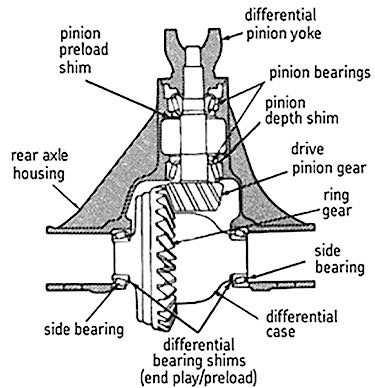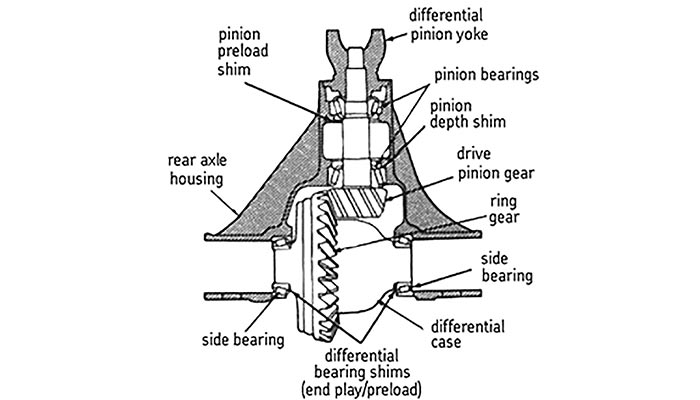 Your vehicle makes many sounds. Most are normal while the vehicle is in motion. But there are times when a noise coming from under the car can be a serious matter. Here are a few common noises that may come from the rear axle that need immediate attention:
Your vehicle makes many sounds. Most are normal while the vehicle is in motion. But there are times when a noise coming from under the car can be a serious matter. Here are a few common noises that may come from the rear axle that need immediate attention:
• A “whirring” noise while decelerating at any speed is most likely caused by bad pinion bearings or loose pinion bearing preload. This condition is typically always diagnosed as a bad ring and pinion gear.
• A “howl” or “whine” during acceleration over a small or large speed range is usually caused by worn ring and pinion gears or improper gear setup.
• “Rumbling” or “whirring” at speeds over 20 mph can be caused by worn carrier bearings. The noise may change while cornering or turning.
• Regular “clunking” or loud “clicking” every few feet may indicate a broken ring or pinion gear tooth.
• “Banging,” “clicking” or “clunking” while cornering can be caused by broken cornering gears (commonly called spider gears), lack of sufficient positraction lubrication or worn positraction clutches.
• A “rumble” while cornering or turning may indicate bad wheel bearings.
• A steady vibration that increases with the vehicle’s speed can be caused by worn U-joints or an out-of-balance driveshaft.
• “Clunking” or “clicking” when starting to move or getting on and off the gas might be loose yokes, bad U-joints or worn transfer case or transmission parts.
NOTE: All unusual or strange noises produced by the driveline while driving have a root cause and should be thoroughly investigated to prevent serious damage to the vehicle or the operator.
Courtesy of SKF














